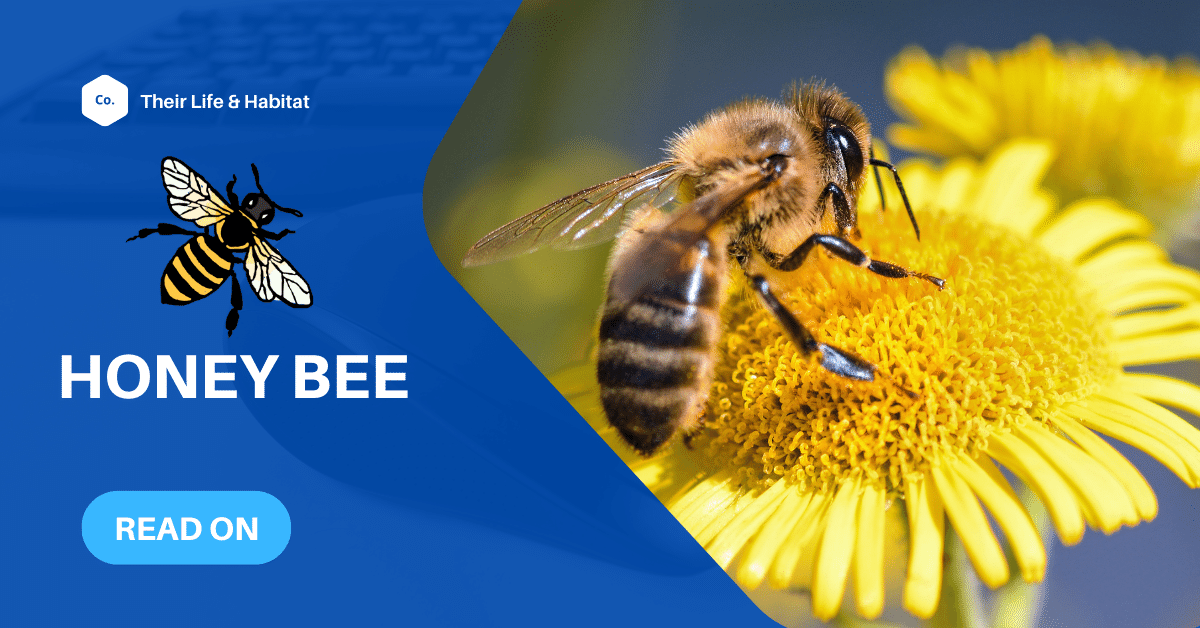Honey Bee Facts For Kids
- Life Cycle & Habitat
Honey bees are one of the most popular and important insects in the world. It is a eusocial flying insect that belongs to the genus Apis. This genus of bees is native to Eurasia. While they can be found all over the world, they are especially popular in areas where pollination is important. Read on to learn more about this fascinating insect! Let us take a closer look!
There are about 20,000 species of bees, all of which belong to the superfamily Apini. Although the Apoidea also includes ants, wasps, and other insects, bees share many common characteristics. They are not generally solitary; they are social insects that form colonies. In this context, workers are social insects that collect pollen, nectar and other nutrients from flowers. They also help raise their young and produce honey.
A worker bee can also give direction by doing a tail dance. By pointing their legs toward the sun, they move in relation to the vertical position of the sun. When they turn their legs to the left or right, they point toward food. Researchers have used this technique to determine how effective it is in communicating with other honey bees. This dance language helps honey bees find food in the dark. Researchers are working to develop a method to determine the exact location of the food source and make honey bees aware of their surroundings.
Despite its tiny size, the honeybee's brain is surprisingly highly developed. It is able to recognize conceptual relationships and can even understand the relationships between objects in the environment. Their social behavior and innate knowledge of their environment make them a popular choice for educational programs. There are several educational resources and worksheets for learning about the honey bee. Check on the resources provided in this page.
The Western honey bee (apis mellifera) is one of the most widely distributed bee species in the world. There are over 20,000 different species found on almost every continent except Antarctica. Their ancestors have been around for more than 80 million years. This makes them a prehistoric species that still thrives today.

There are two types of workers in a bee colony. Workers are females that live in colonies with queens. Workers are the ones who produce the honey. A worker bee is a male that mates with the queen. In a queen bee colony it is the same. But the queen is the only one that can reproduce. She has the ability to lay eggs. Therefore, a worker bee must be able to feed itself and its mate.
Since the queen bee is the most fertile female, she has a complete reproductive tract. Her abdomen is long and round. Also, the queen bee has a rounder body than the workers. The female bee can produce both worker and queen bee eggs. The worker bees are fed royal jelly for the first three days. After that, they switch to a mixture of pollen and nectar. The queen bee continues to feed on royal jelly.
The queen bee is the fertile female of the entire colony. Females are divided into castes and sexes. In a typical bee colony there are about 20,000 different subspecies and 44 subspecies. In many regions, honey bees are widely domesticated and found in a variety of climates. They are highly adaptable, but their habitats are critical to the survival of the species.
The queen bee has a reproductive tract that is fully developed. She is larger and has a longer abdomen than the workers. If she feels threatened, the swarm will attack and possibly kill the entire colony. Insecticides and other chemicals can also kill the queen bee, which in turn can be dangerous to the ecosystem. The sting is not only painful for humans, workers also die when stung by a queen bee.
The queen honey bee is a social insect. She builds a hive of wax cells and lays her eggs in them. Temperature is an important factor in the later development of the queen's young.
Check out the resources here and learn about life and some interesting facts about honey bees.
